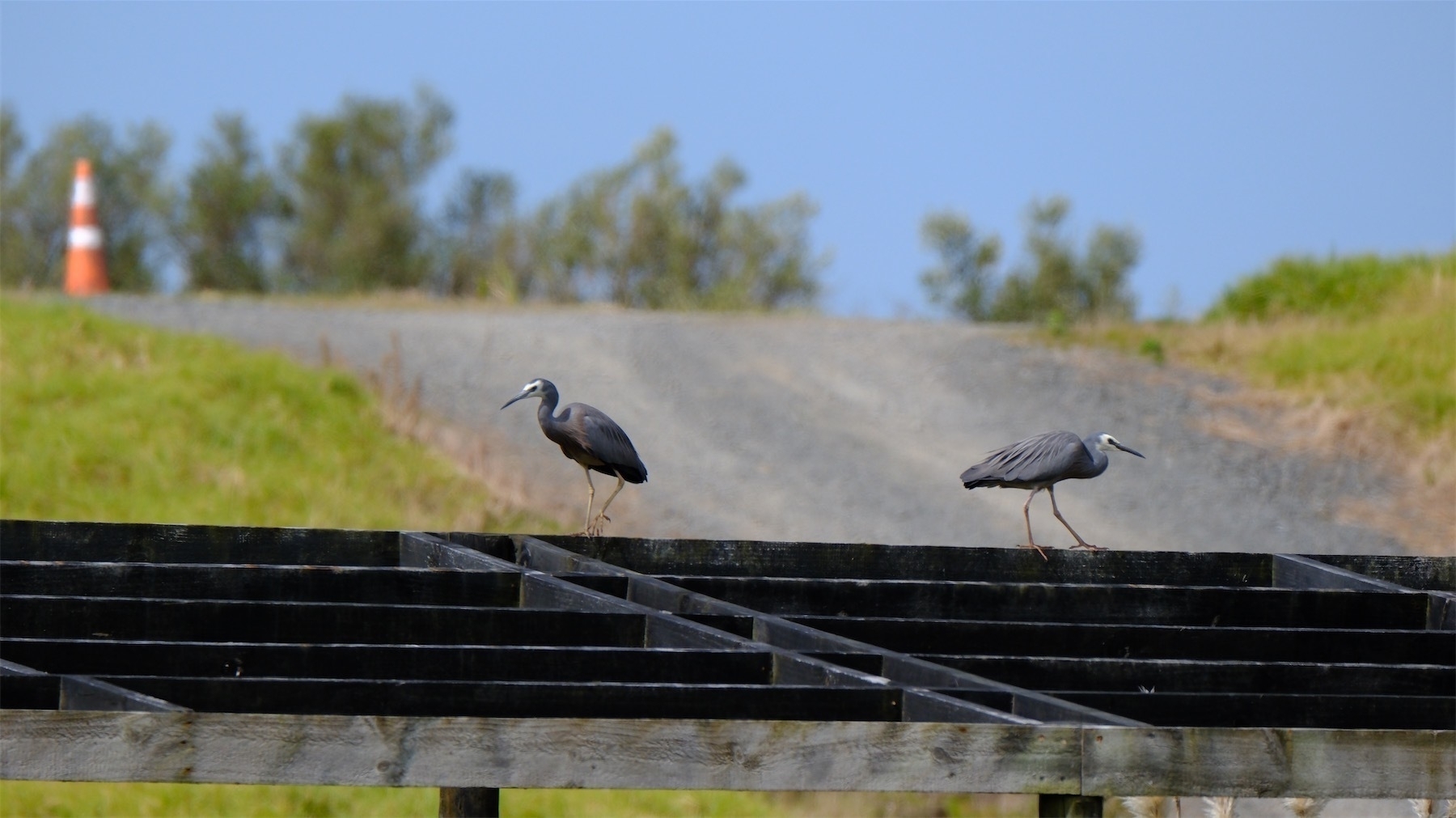-
Baby Magpie is becoming more visible. 🐦
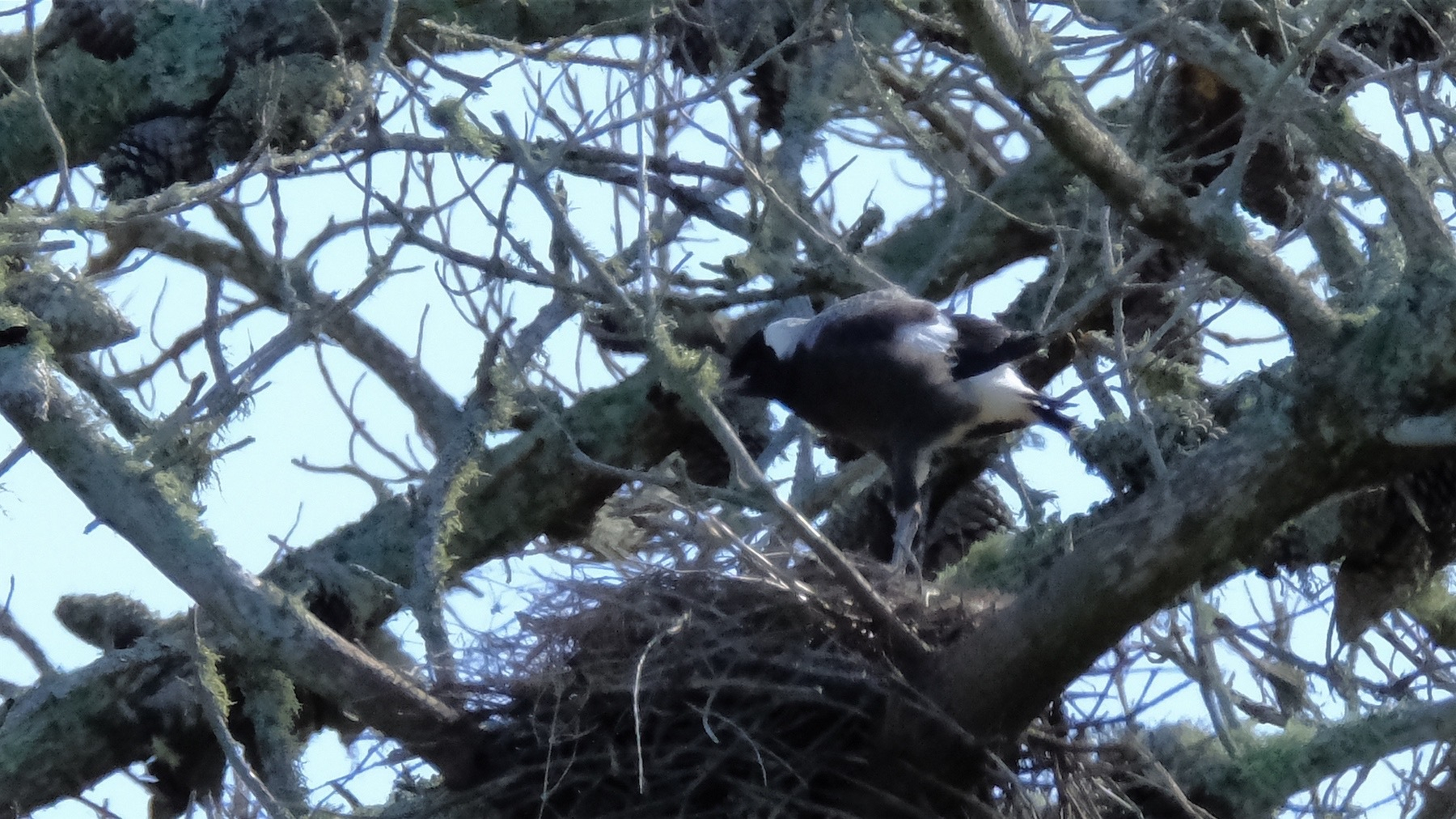
-
We enjoyed a few minutes walking by the Whangārei marina, spotting this tree covered in butterflies.
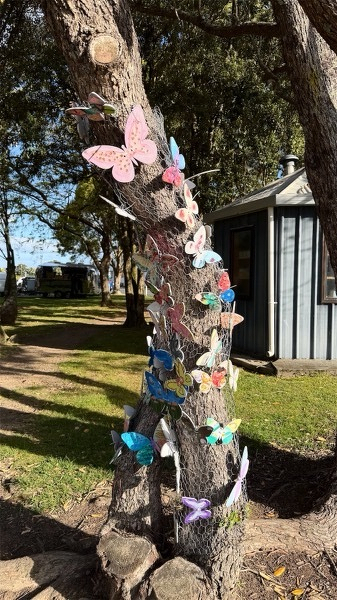
We also saw a Spotted dove 🐦 :
A native of south and south-east Asia, the spotted dove was introduced to New Zealand in the 1920s, when some were released from captivity in Mt Eden, Auckland. …
The spotted dove is a medium-sized, somewhat long-tailed dove with a greyish head, pink-grey underparts, and speckled greyish brown upperparts. Its distinguishing feature is a large white-spotted black half-collar around the back and sides of the neck.

-
This strawberry is pretty much the first fruit of our food forest. Yum.
I'm really surprised "our" magpie hasn't scoffed it. Too busy chasing off "our" white-faced heron I guess. 🐦

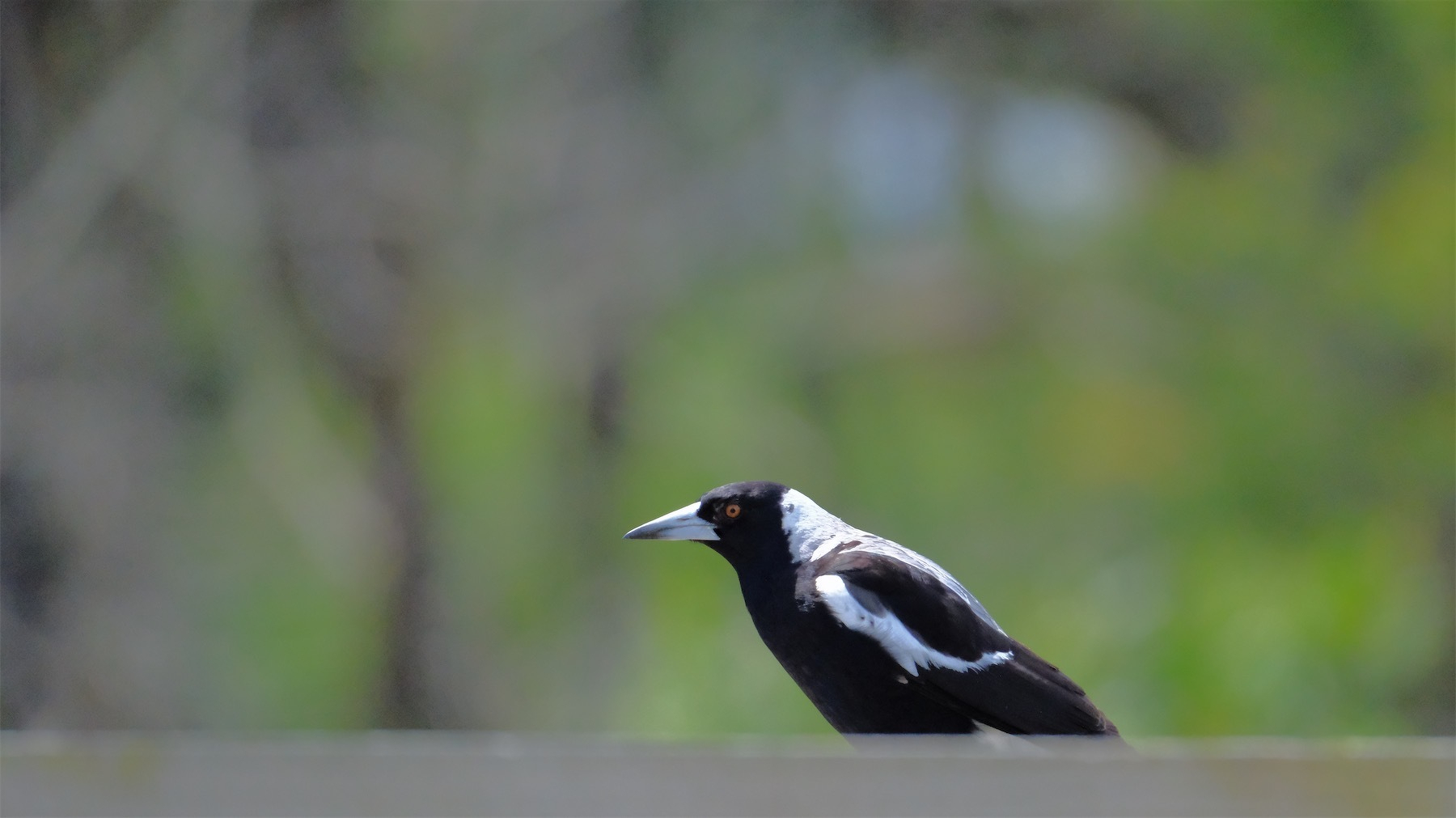
-
I've been monitoring a magpie nest high in a nearby tree for a while now and I believe there are new chicks up there. I saw 2 adults leave the nest, but there was still movement. I'm pretty sure I could see a chick's head. 🐦
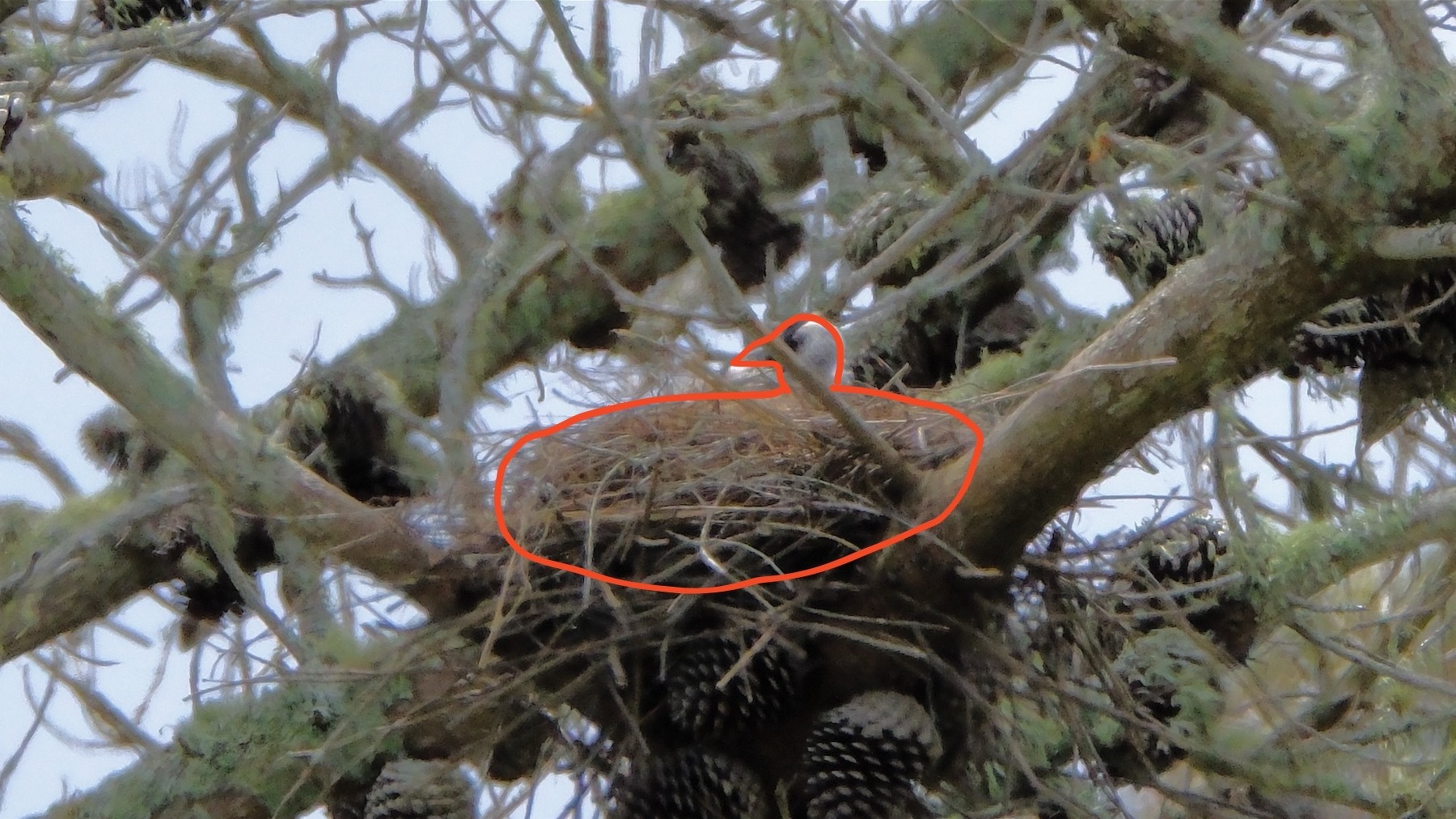
Nest and head outlined. 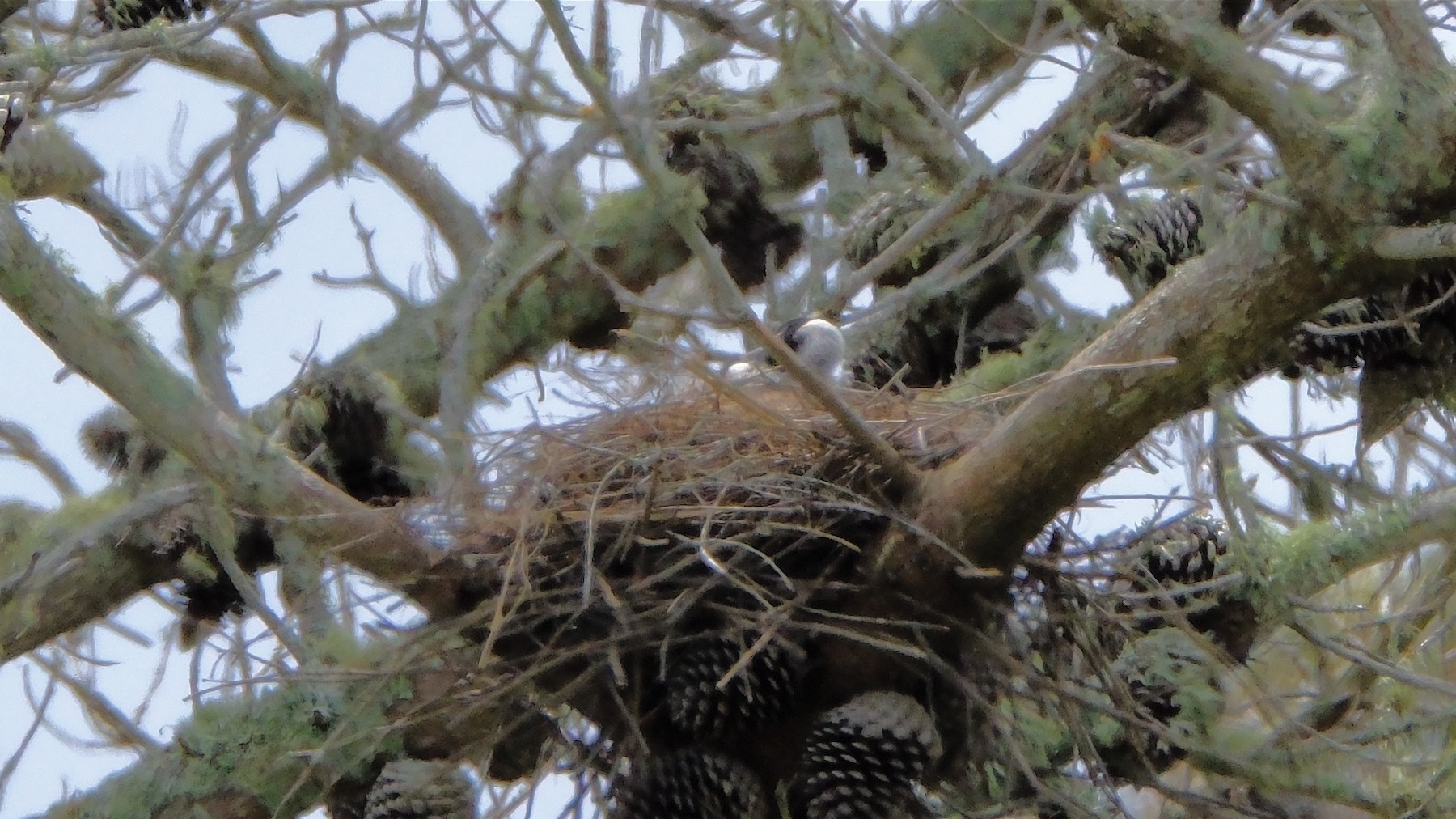
Nest, with bird's head just visible. -
Mallard ducks on the Dune Lake. 🐦

-
A flash of very vivid blue caught my eye across the river — it turned out to be a Kōtare | Sacred Kingfisher. It's barely visible in the two photos below, flying at centre right. 🐦
Meanwhile a Matuku moana | White-faced heron took flight.
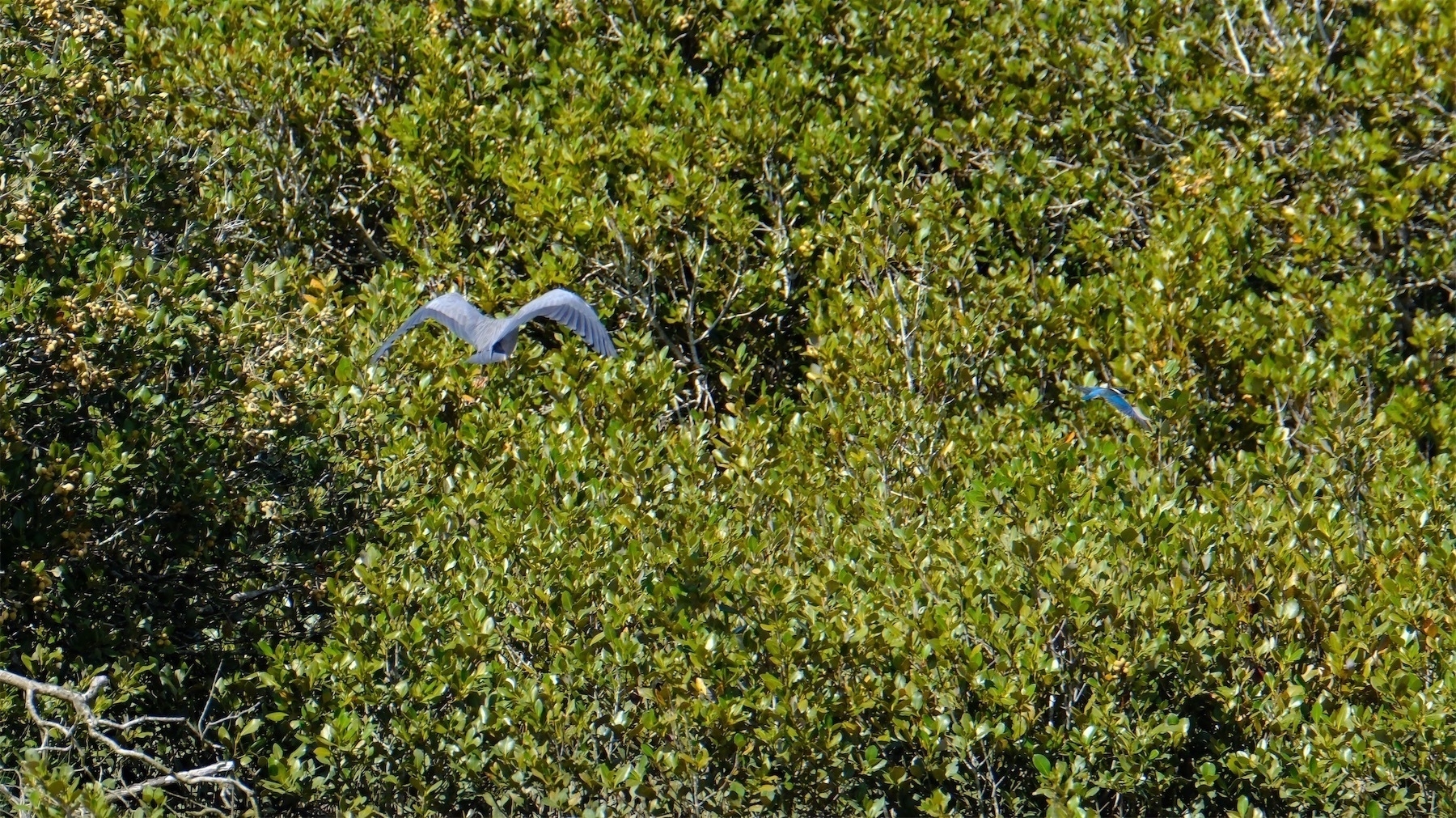
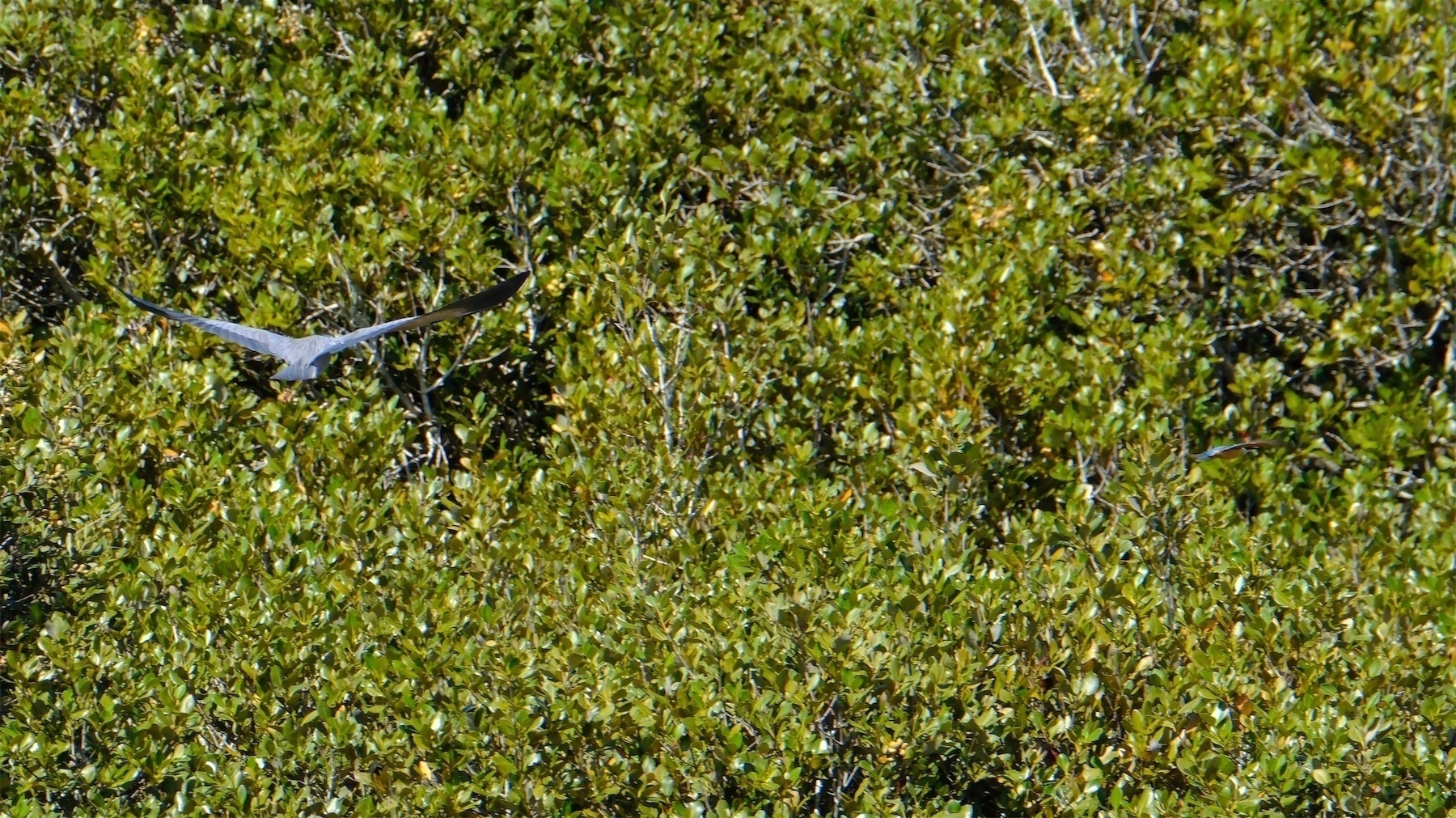
-
On our train ride up by Kawakawa the other day we spotted this Kawaupaka | Little shag in trees by the line: 🐦
the little shag’s diagnostic short-billed and long-tailed silhouette, along with its small size and stubby yellow bill. Shape alone is sufficient to identify a little shag.
At least, I think that's what this bird is. It was quite little and has a stubby yellow bill.
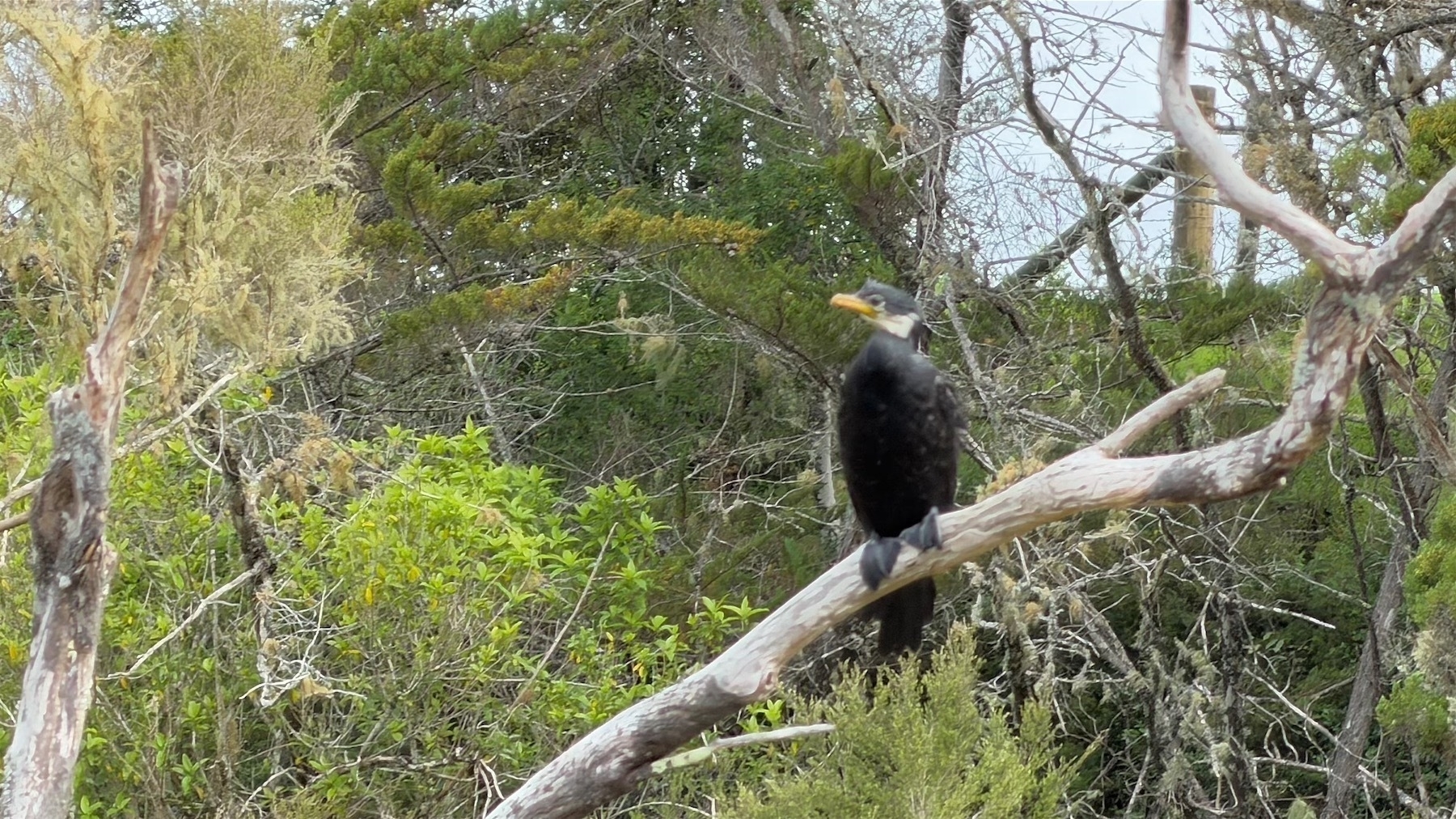
-
On yesterday's vintage train ride out of Kawakawa we had to stop for a few minutes for staff to open huge gates that blocked access to a bridge.
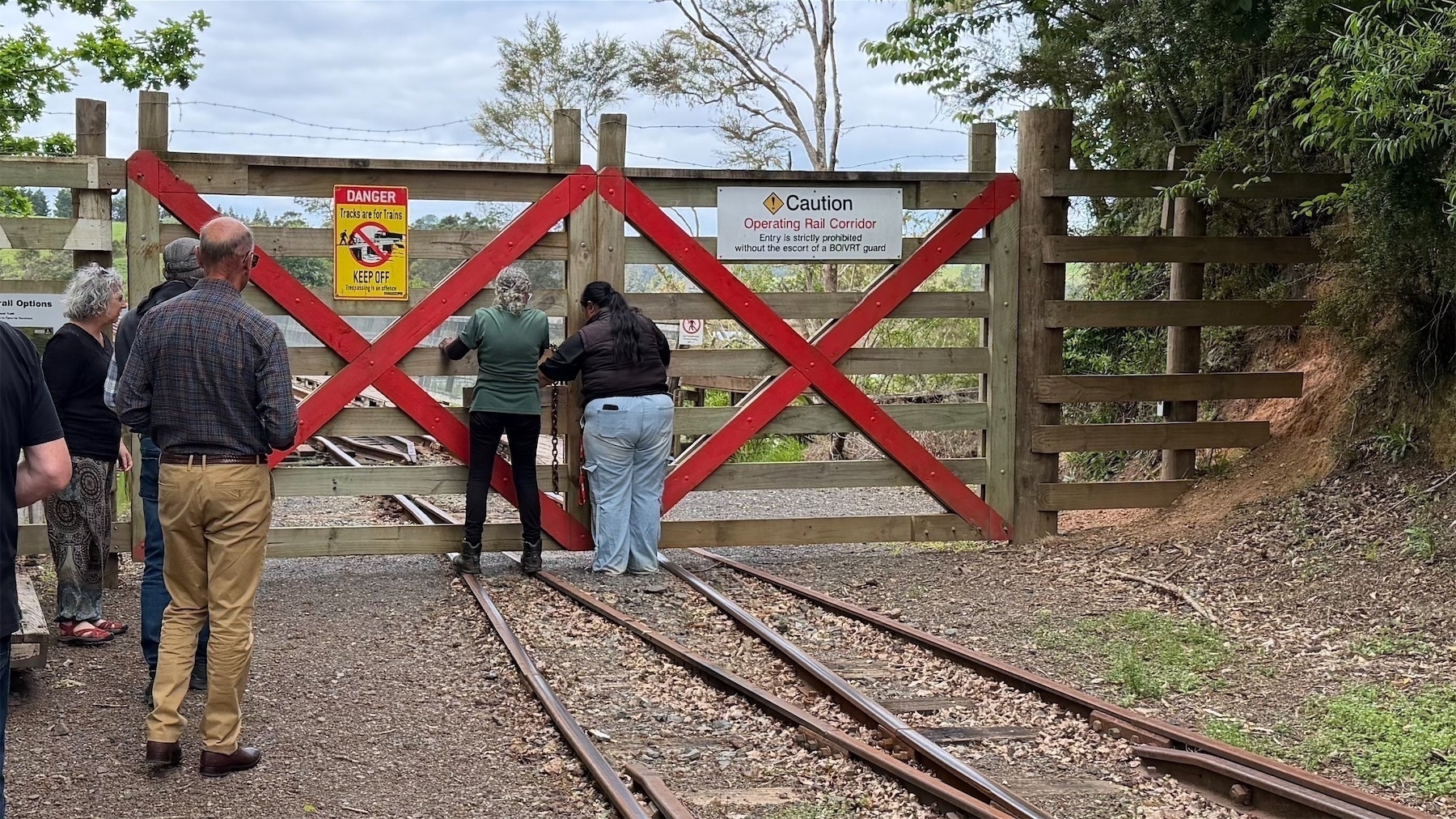
I was interested by the sign cautioning people, especially cyclists on this part of the Twin Coast Cycle Trail, to watch out during nesting season for swooping magpies. 🐦
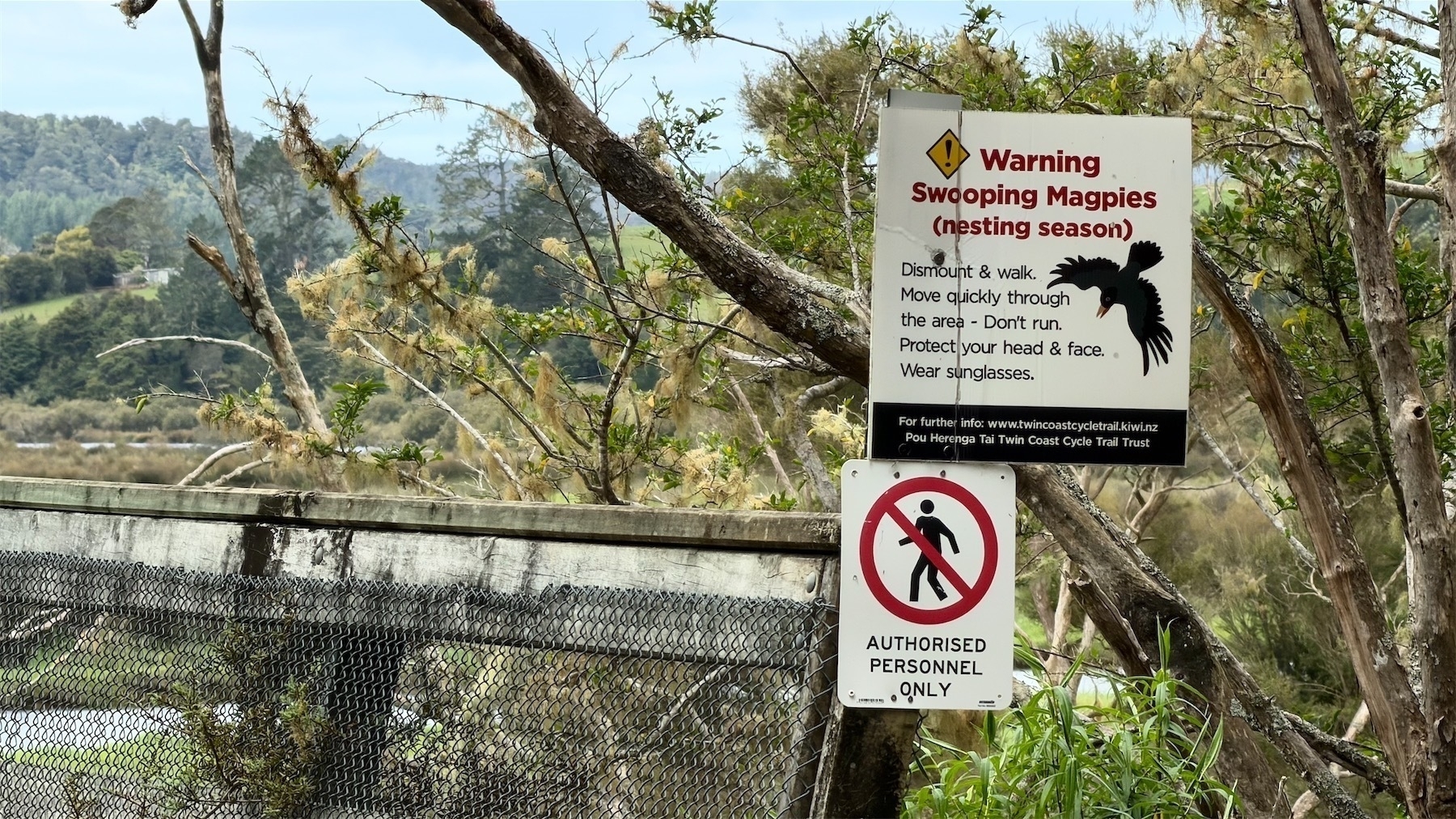
Warning Swooping Magpies (nesting season)
Dismount & walk.
Move quickly through the area - Don't run.
Protect your head & face.
Wear sunglasses. -
Several flights of Kuaka | Godwits flew north while I was hanging out at the Dune Lake. One lot flew right over me, and so low I could hear the whirring of their wings. It was magical. 🐦
Photos from a different group.
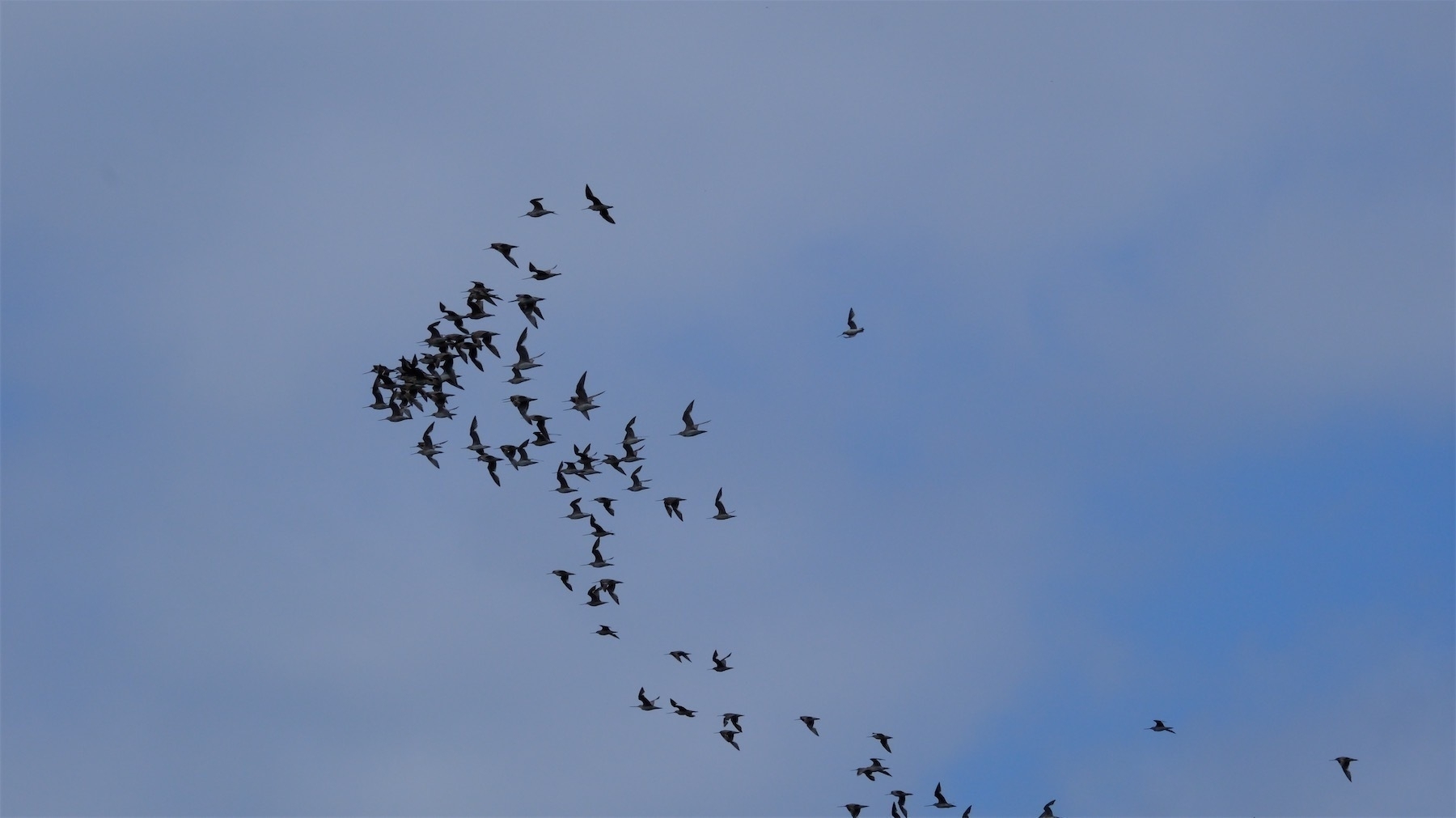

-
Paradise Ducks would be a great alarm system — they spot you from miles away and don't stop squawking till you leave.
These were down at the river mouth yesterday. 🐦
-
Today we drove south slightly to look at Langs Beach, about 3 Km south of Waipū Cove.
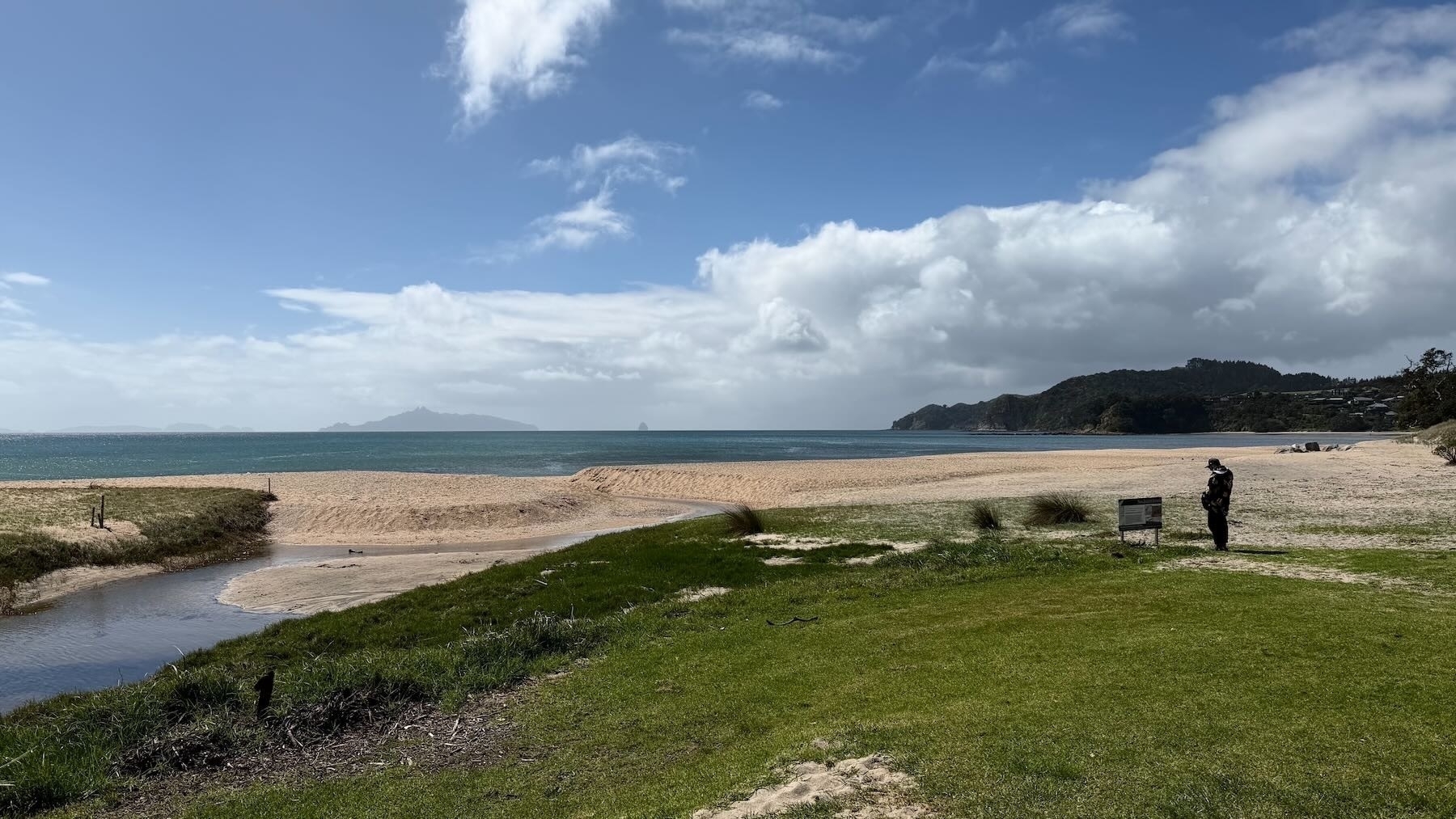
Then we drove a tad further to Mangawhai Heads and Mangawhai, all rather built up.
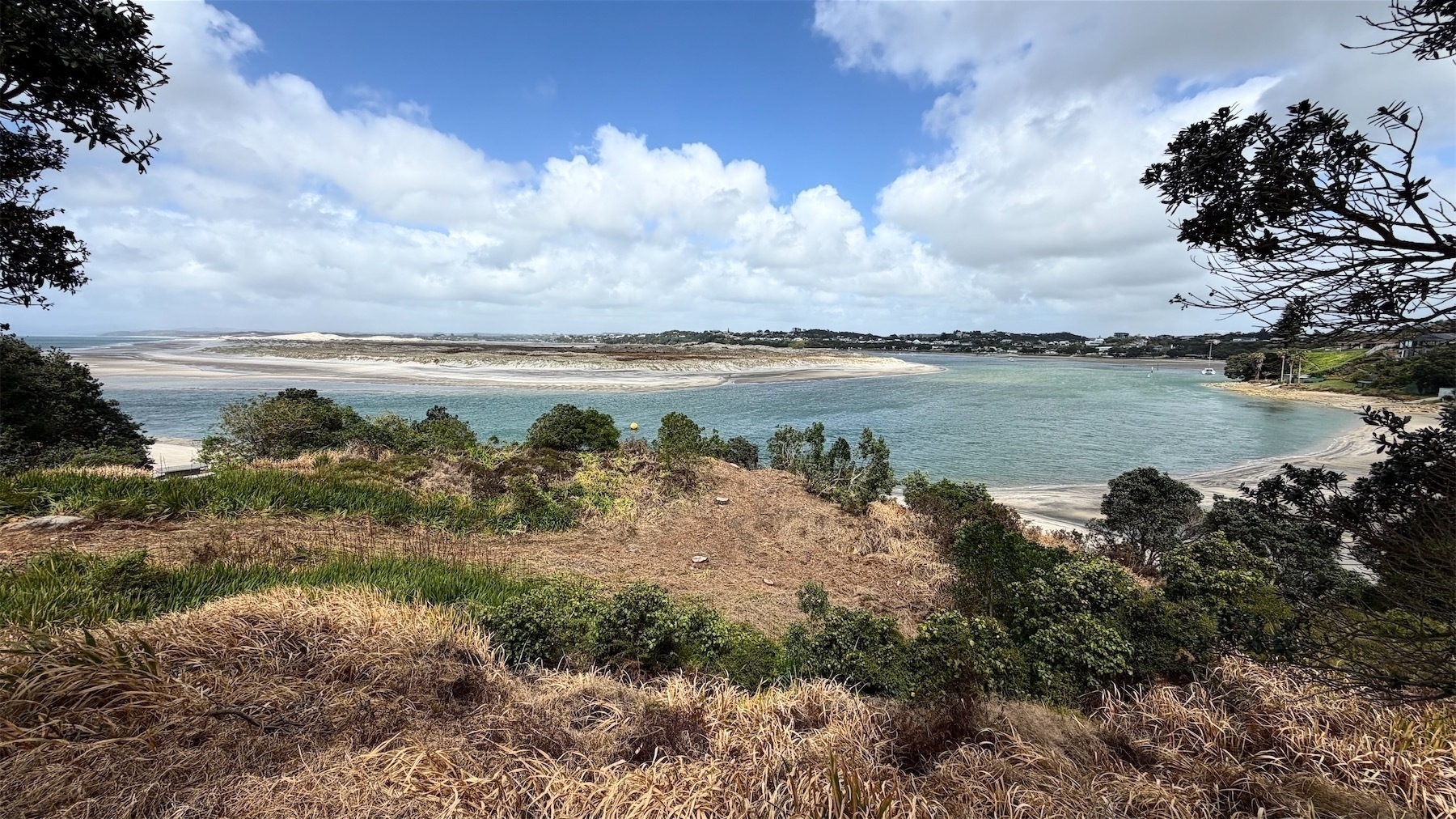
The Mangawhai sandspit The sandspit is home to the extremely endangered Tara iti | Fairy tern. 🐦
The relict population of fewer than a dozen pairs survives between Whangarei in the north and Auckland to the south. The tiny population is gravely threatened by introduced predators and disturbance or encroachment by humans. They are intensively managed during the breeding season.
-
This pukeko was hurrying by with a tasty morsel. 🐦

-
Magpie yodelled at me from the corner of the fence this morning. 🐦

-
Black swans and mallard ducks on the nearby Dune Lake. 🐦
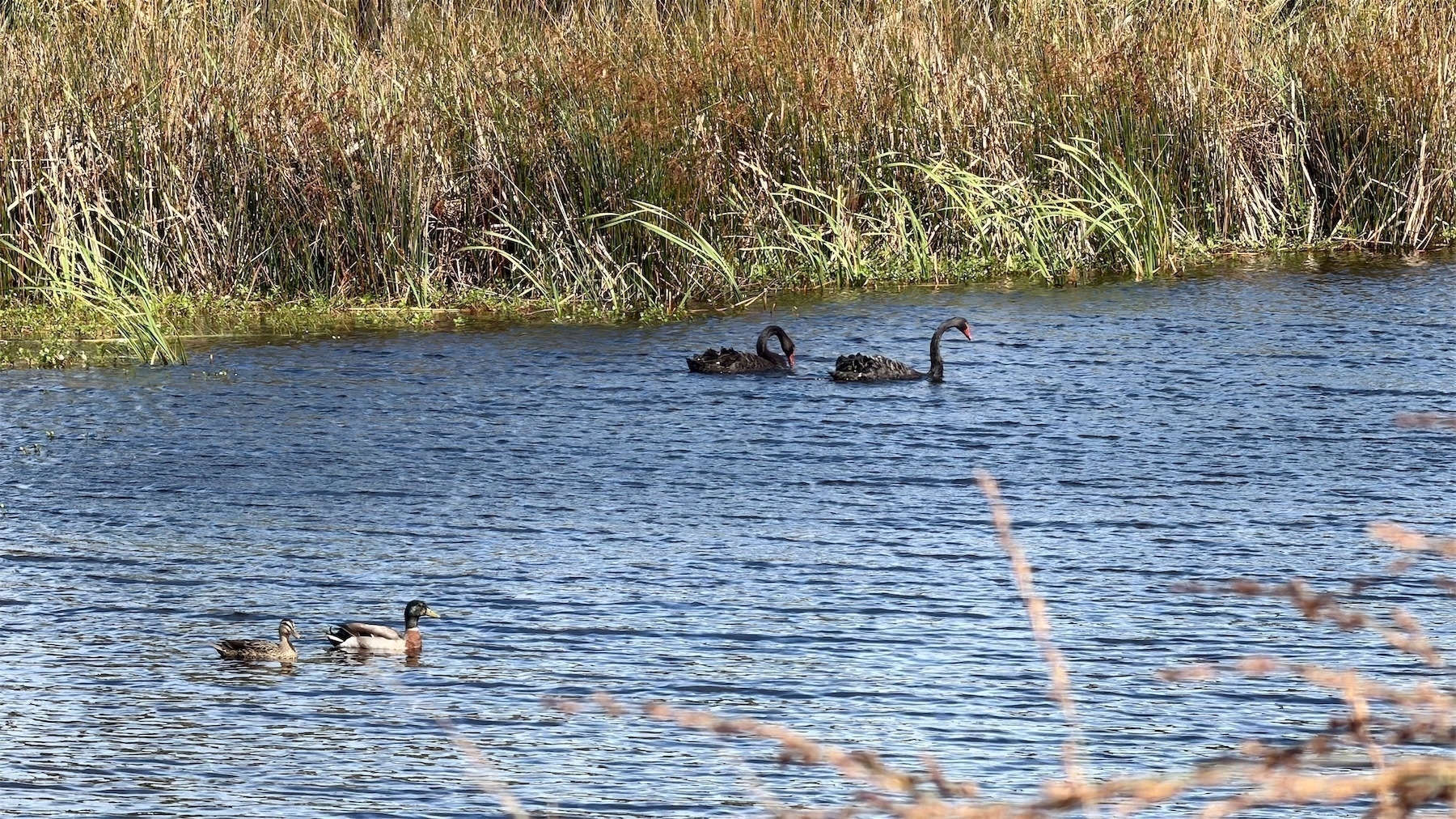
-
The 8x optical zoom on the iPhone 17 Pro is quite something. 🐦
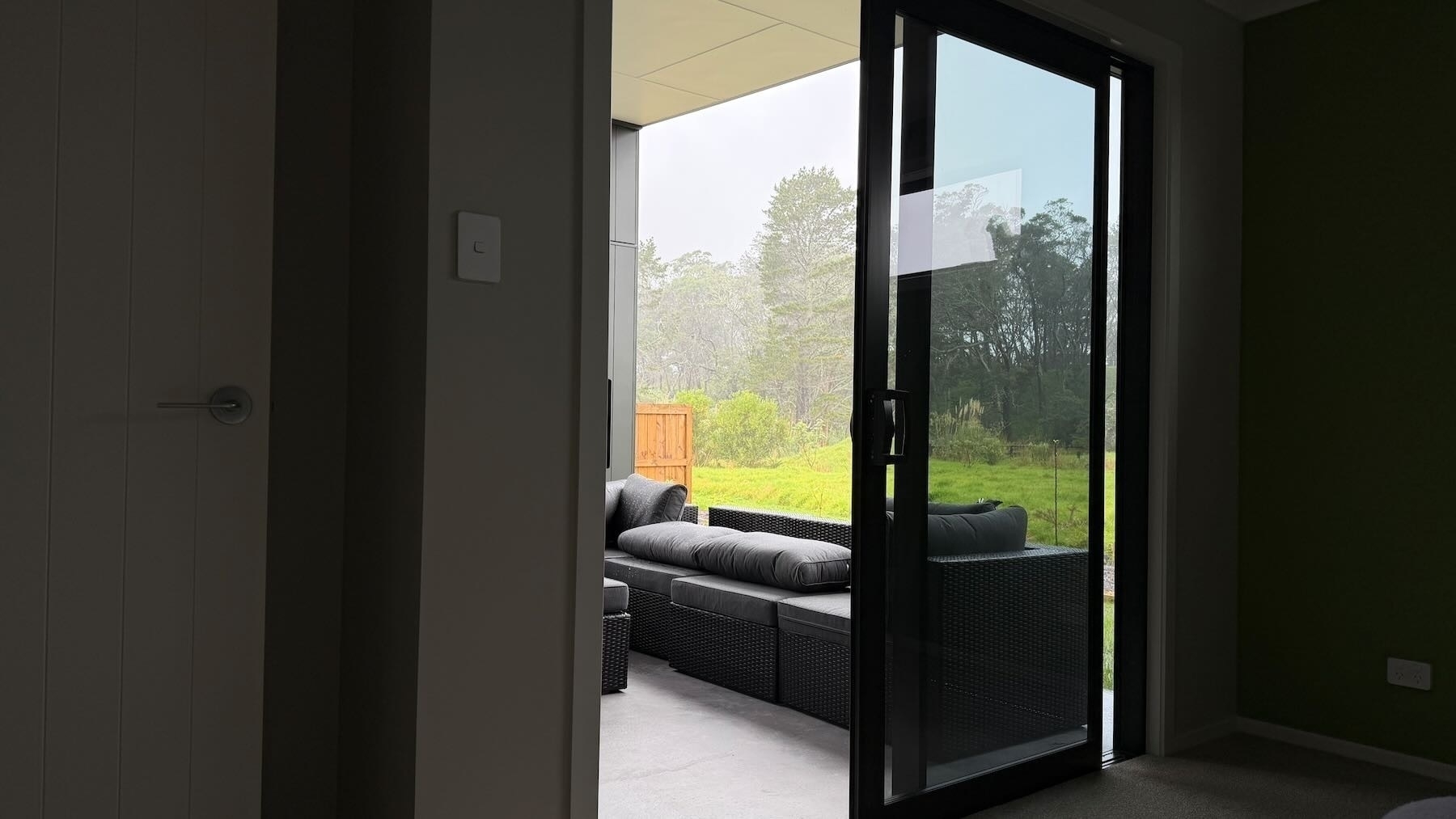
A 1x view through a window, across a patio and green grass through pouring rain to tall trees about 100 metres away. 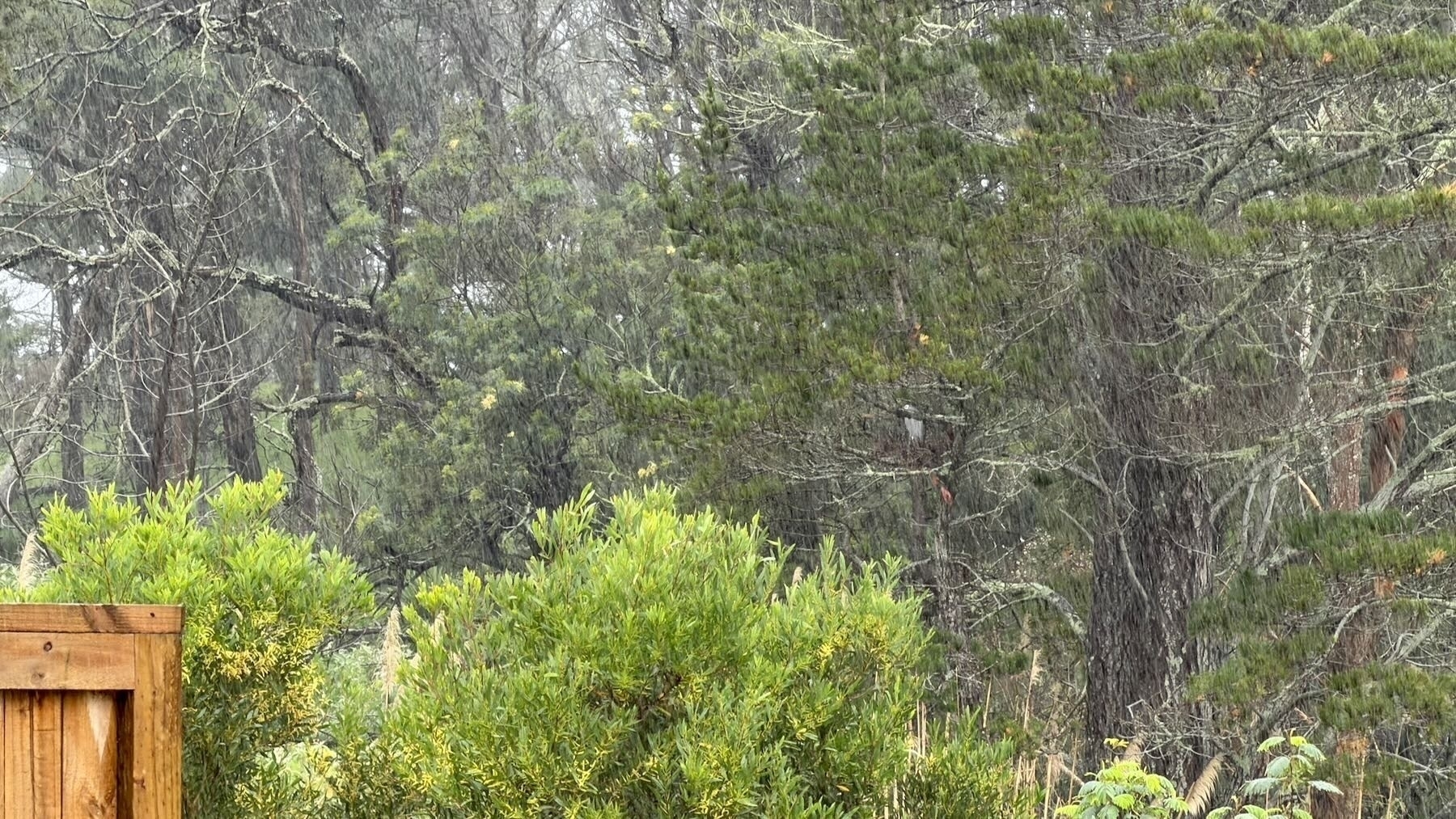
An 8x closeup on a tree. In the middle of the picture is a white-faced heron sitting on a nest on a tree branch. -
You can tell it’s spring. A pukeko family of 2 adults and 3 chicks on the grass not far from our house, and a pair of white-faced herons nesting in the tree closest to us. 🐦
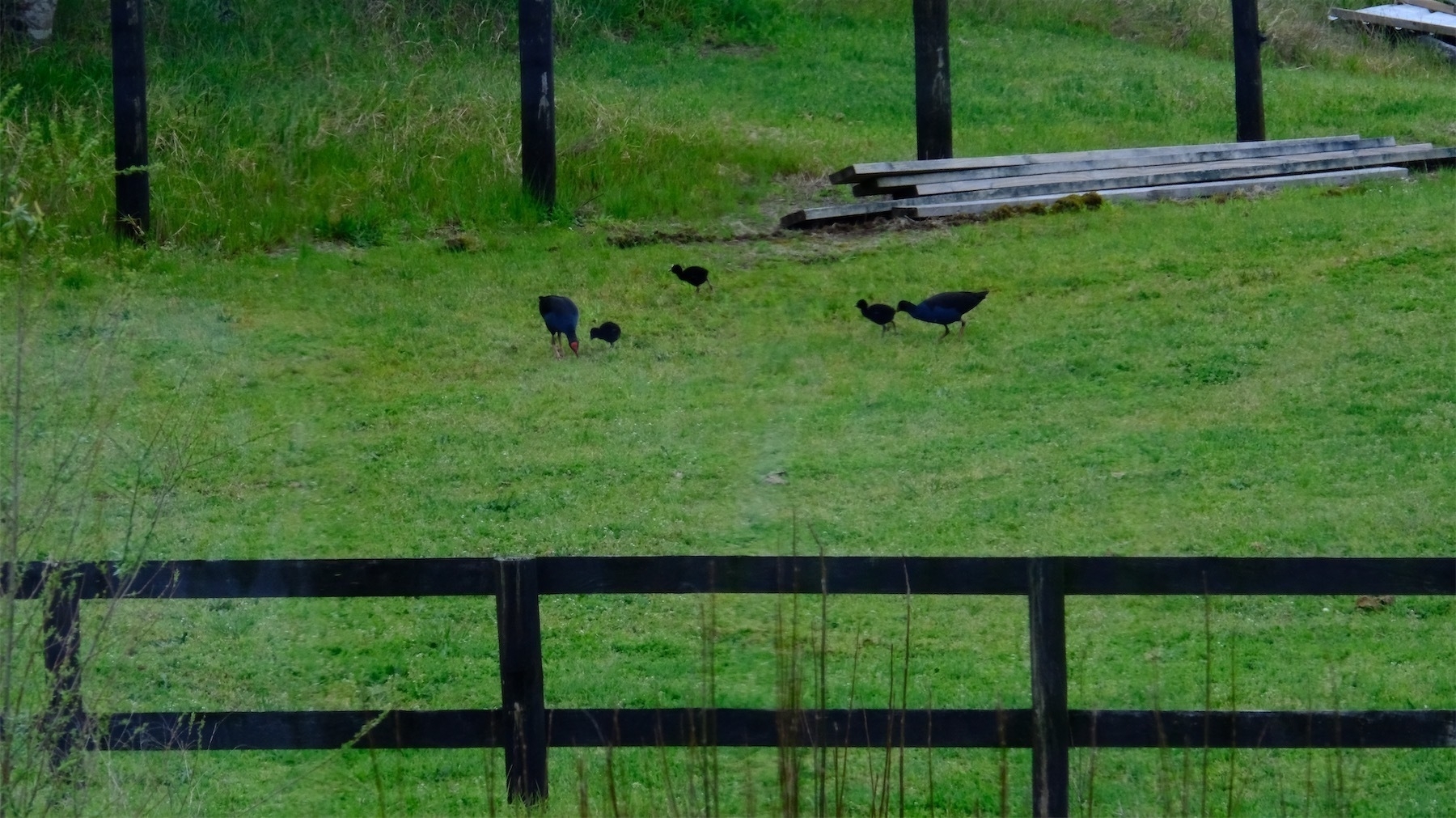
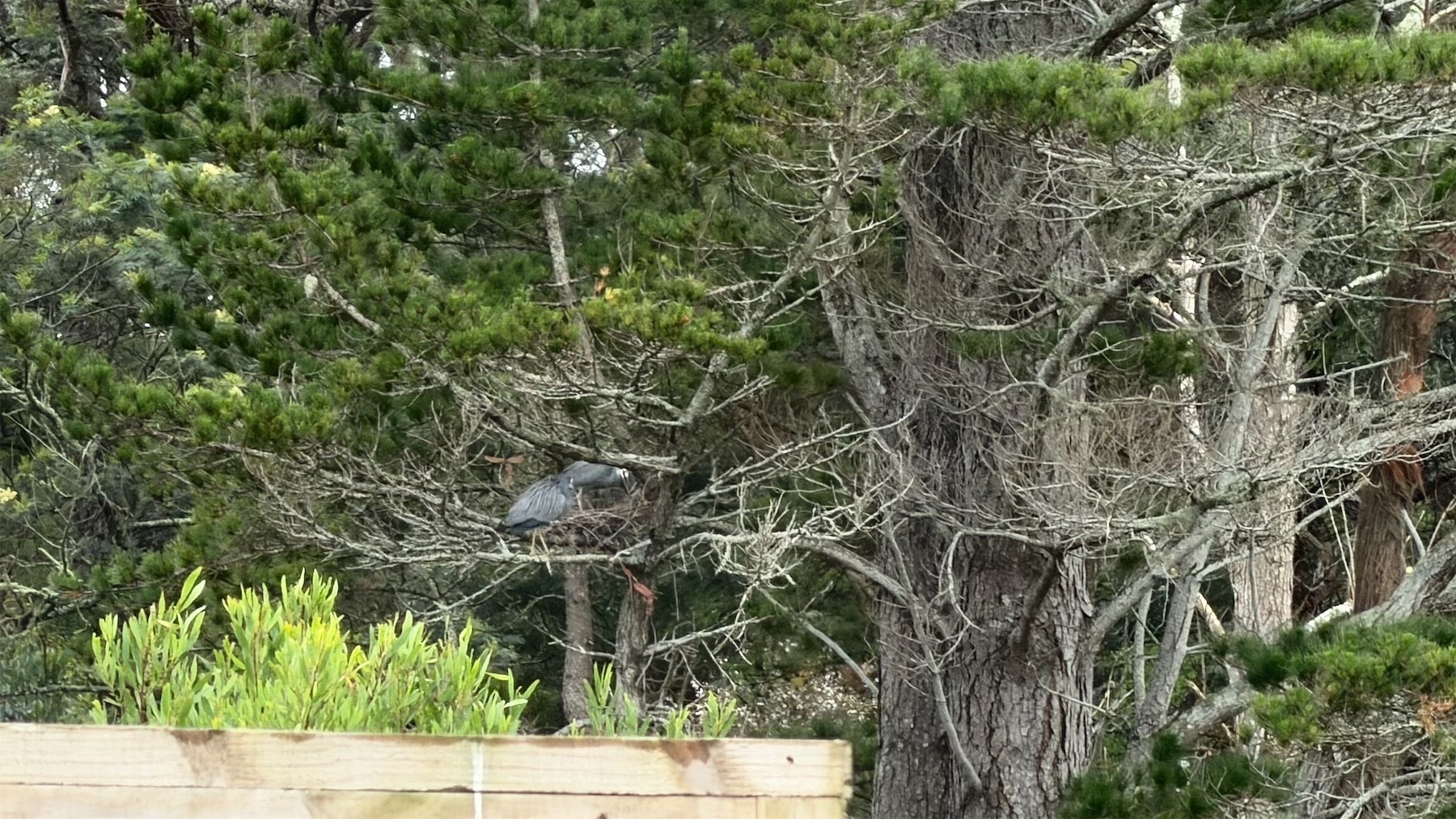
-
Kiwis, or folks who know NZ Birds, give Birdle NZ a try. 🐦
Birdle 🇳🇿 15/09/2025
🟩🟩⬜🟩🟩
🟩🟩🟩🟩🟩
https://birdle.nzVoting for Bird of the Year closes on 28 September 2025.
-
Today's visitor, moments after it started to rain heavily. 🐦

Pukeko crosses the lawn (through the window). -
I want to thank Microblogger Patrick Taillon for putting me on to this 2 hour long video — LISTERS: A Glimpse Into Extreme Birdwatching which I watched over several sessions. 🐦
Partly documentary, partly mockumentary, it was a great look into the birds of North America and the folks who dedicate themselves to seeing / hearing them and adding them to personal lists.
I laughed a lot.
Two brothers learn about competitive birdwatching by becoming birdwatchers—spending a year living in a used minivan, traveling the country to compete in a ‘Big Year'.
-
You never get too old to rescue puffins: it's part of who we are.
Summer Puffling Patrols: Saving thousands of baby puffins from light pollution 🐦:
In this 13-minute Wild Hope video from Nature on PBS, biologists Erpur Snaer Hansen and Lucas Canas document the Atlantic puffins that breed on Iceland’s Vestmannaeyjar (Westman Islands), where roughly 400 puffins exist for every human resident.
-
Meanwhile, it turns out we have our very own White-faced Heron outside the back door. 🐦
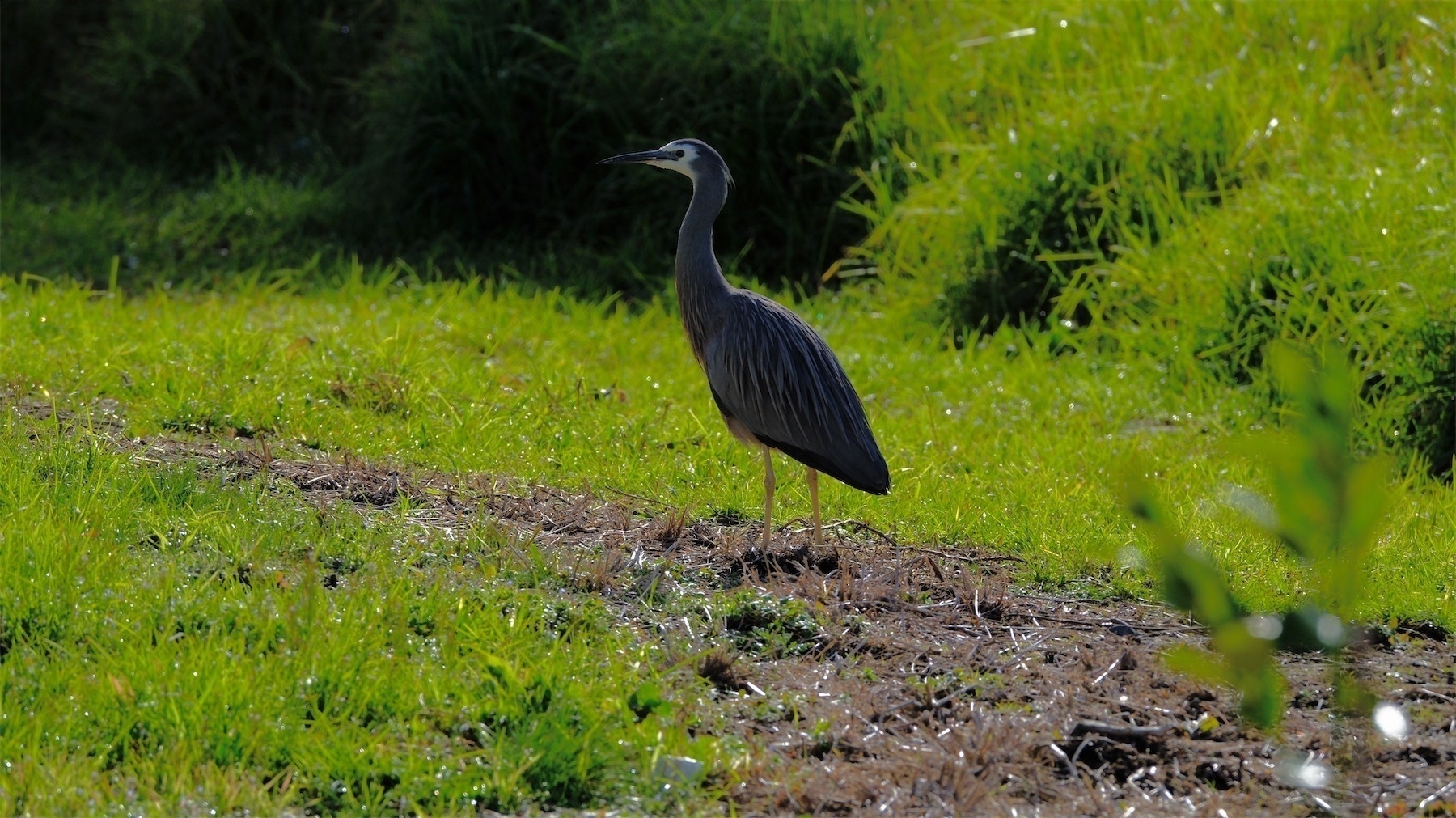
-
A dawn walk at the beach took me to the sandspit on the north side of the Ruakākā River mouth, a wildlife refuge, where birds nest. 🐦
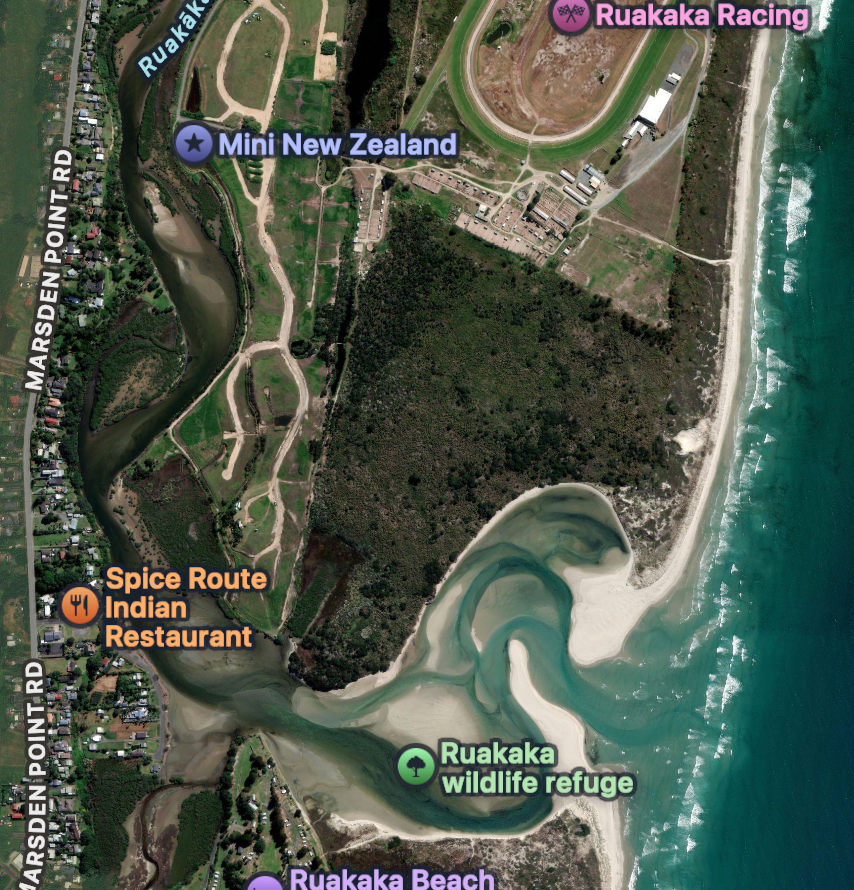
There were quite a few NZ Dotterels and Variable Oystercatchers, along with black-backed gulls, a shag and possibly a duck.
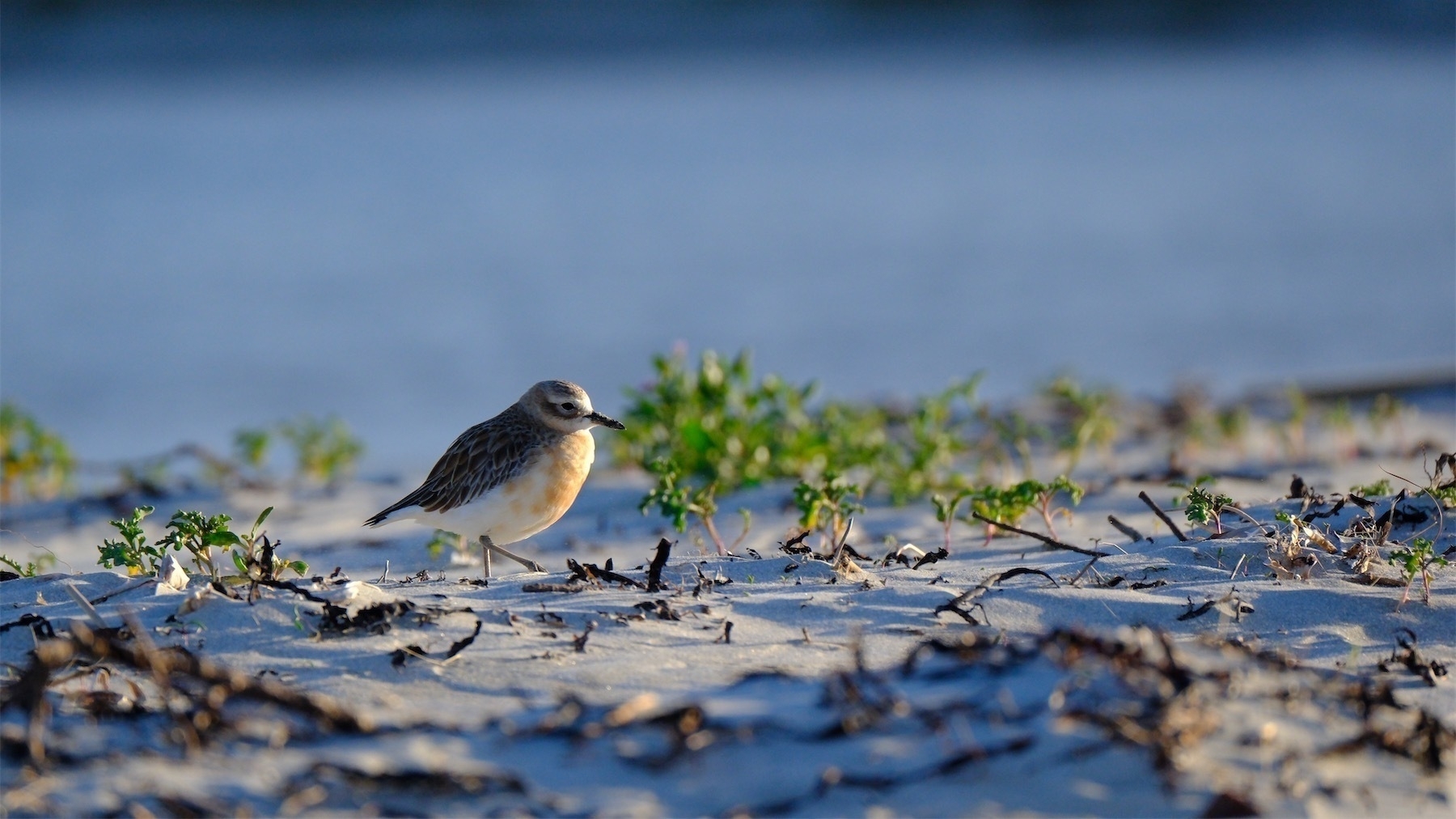
-
No photos yet, but so far the birds I've spotted around here are:
- Mynah (they don't live as far south as Waikawa Beach)
- Sparrows
- Gulls
- Magpies
- White-faced heron
I may also have heard spur-winged plovers.
I've located my bird feeder, but haven't yet found the food … 🐦
-
We don't actually leave for a few days but I decided just before sunset on a sunny and relatively warm afternoon would be a good time to do a farewell visit to the beach.
My bird photography skills have rusted over winter. 😒 🐦
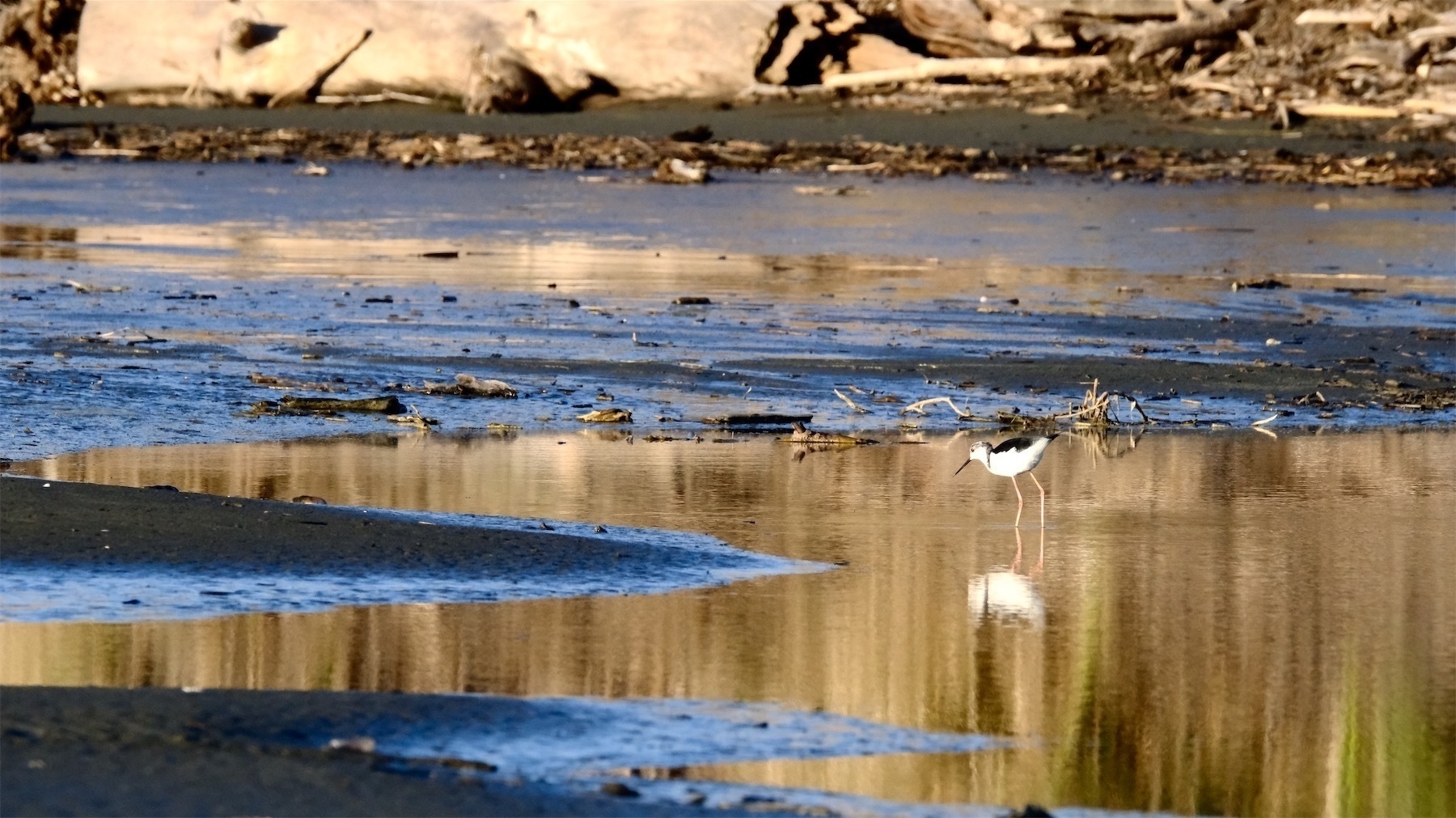
Pied Stilt in remnant water. 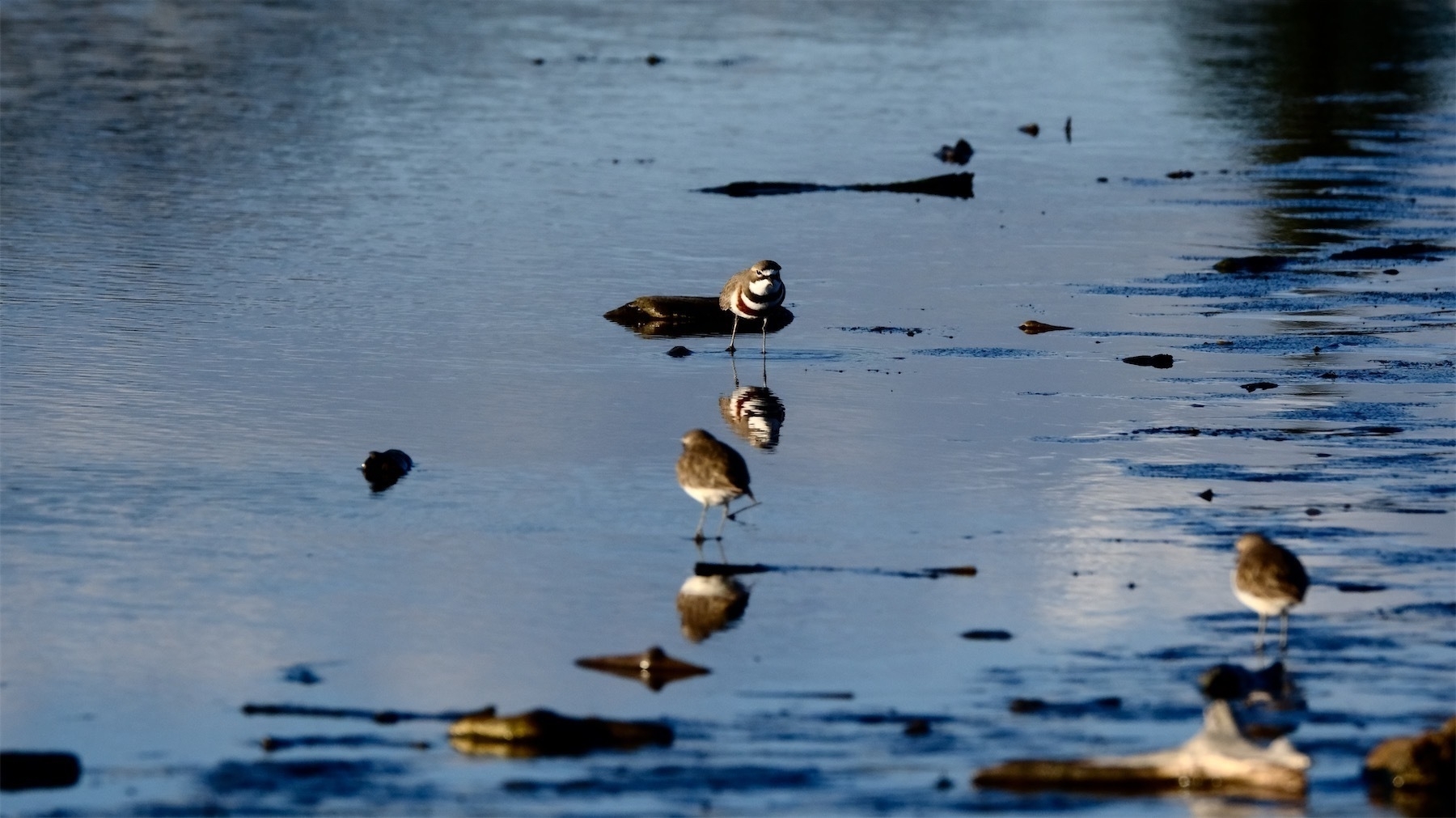
Banded dotterels. 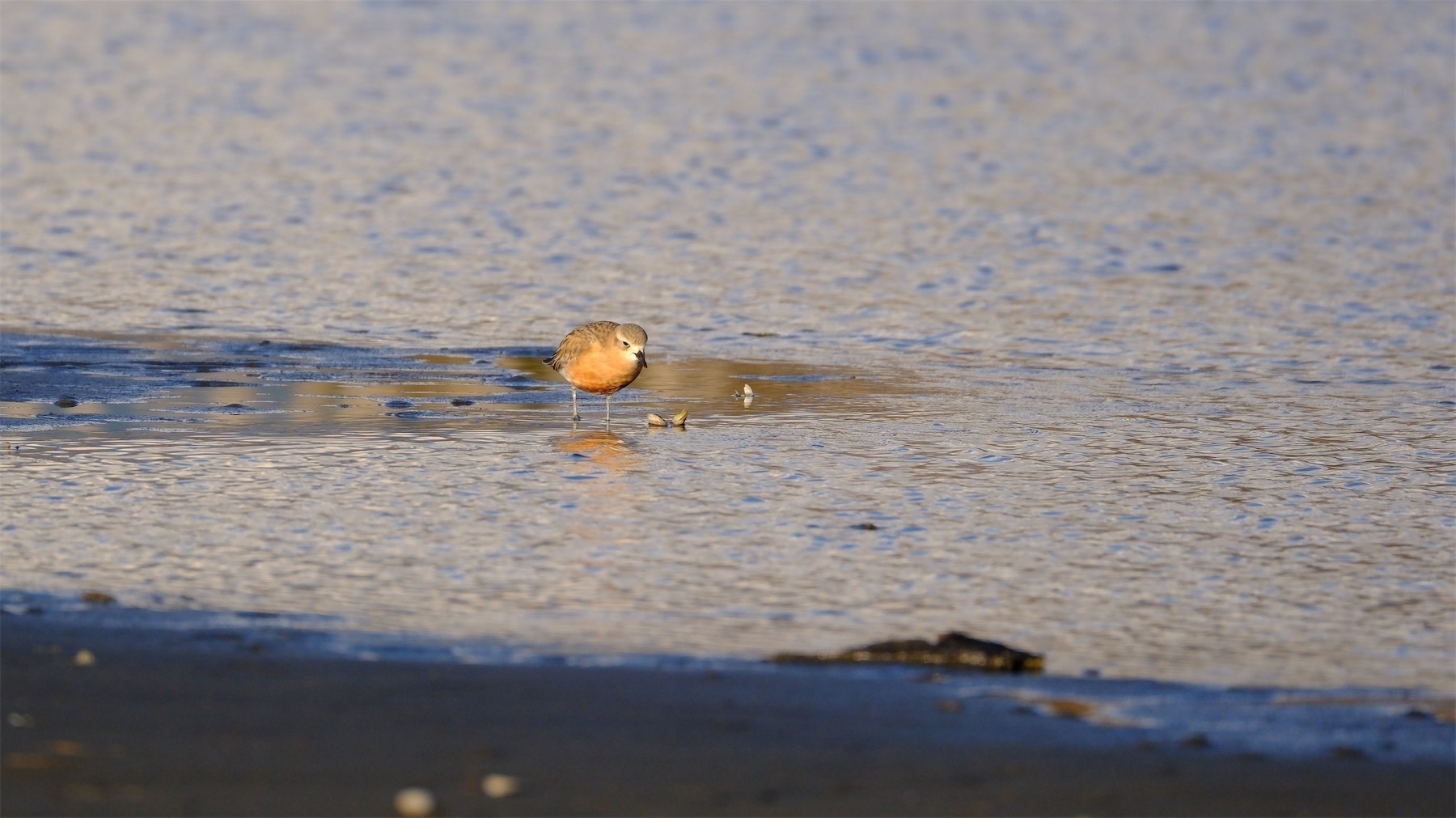
NZ dotterel.
Miraz Jordan
I love simplicity and silence. I enjoy taking photos of birds, and strive to be an actively decent human being. In late August 2025 I moved from Waikawa Beach to Ruakākā near Whangārei in Aotearoa. 100% human (she / her). Now 70, I'm super happy to be getting old — it means I'm not dead yet! I believe all beings have the right to clean water, nutritious food and adequate shelter, and that humans are simply one small part of the amazing life on this planet that supports us all: humans, animals, plants. I joined the MB community on 05 January 2018. Follow me on Micro.Blog at https://micro.blog/miraz .

